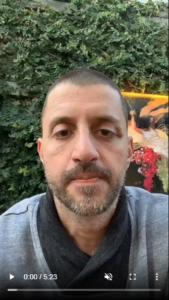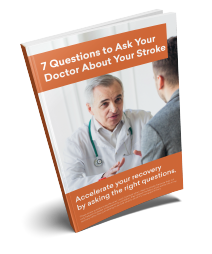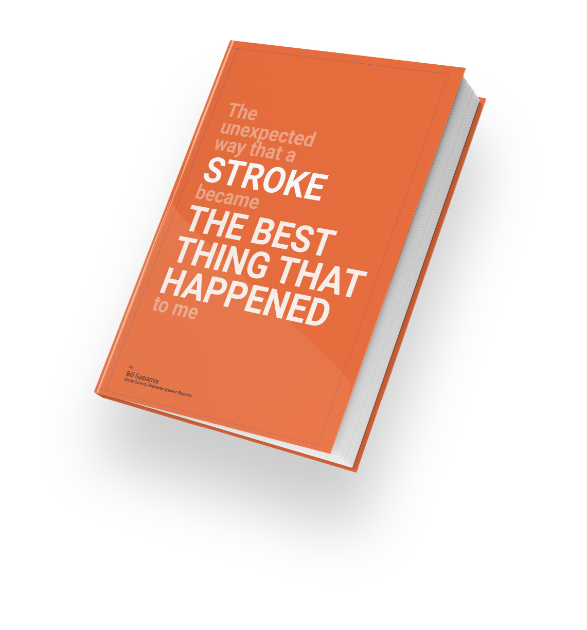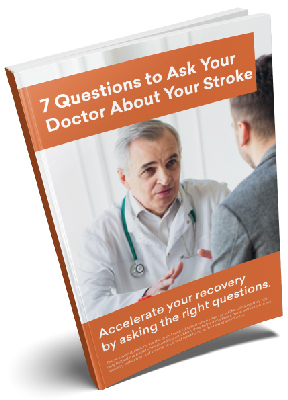Thank you for trusting us to handle your personal information. We believe privacy is important and have created this policy to let you know how we handle the personal information we receive and hold about you, who we share it with, how we keep it secure and what your rights are.
This policy covers how we handle personal information collected from our main website, any related websites we control, our social media platforms or o125ur coaching or other online programs (collectively called ‘website’ in this policy) or other interactions we have with you. In general, the more interaction we have with you, the more personal information we are likely to collect from you.
Under the Australian Privacy Act 1988 (Cth), personal information is information about a living person which can be used (by itself or together with other information) to reasonably identify that person. For example, your name and email address are personal information. Sensitive information is personal information requiring special protection and includes information about your health. For the purposes of this policy, we are including sensitive information within personal information.
As we may collect health information about some of the clients we coach, we take additional precautions with privacy and are governed by the Australian Privacy Principles.
Schedule 1 – Our details
If you have any questions or concerns about our handling of your personal information, please use the contact details below to contact us.
Privacy Policy
When we talk about ‘us’ or ‘our’, we mean our business as identified above.
When we talk about ‘you’, ‘user’ or ‘your’ in our terms and conditions, we mean you, the user of our website or services or visitor to our website.
In general, we only use your personal information for the delivery of our services, to provide information, to send you a publication you have requested and for limited follow up marketing emails (which you may opt out of). We never sell or giveaway your personal information.
- Staying Anonymous
You can browse our online website anonymously (although cookies may identify your IP address). However, if you use, request or sign up for or purchase any of our services or request a publication or information to be sent to you, you will need to identify yourself and at that point we will start collecting your personal information. If you do not give personal information to us, it will affect our ability to provide you with requested information or to deliver our products or services.
- Collecting personal information
At all times we try to only collect the minimum information we need to provide the services you have requested, complete basic marketing and to keep our records up to date.
The main way we collect personal information about you is when you give it to us, for example:
- when you contact us
- when you submit information to our website or in person (for example if you enter your name and email address to request one of our free publications)
- when you talk with us in person (for example as part of our coaching services)
- when you ask for access to information we hold about you
- when you complete our survey or questionnaire
- Collecting information from third parties
If someone calls on your behalf or provides us with information about you on your behalf, we may collect the information they provide and the caller’s name and contact details as well.
If you have consented to us doing so, we may also collect personal information that is given to us or available to us by a third party (for example, information that a doctor or health practitioner gives to us at your direction).
When you use our website, we may receive data from third parties such as analytics providers and advertising networks like Google and Facebook.
This information forms part of the personal information described in this policy.
We will not intentionally collect personal information that is unintentionally disclosed.
- What do we collect?
If you subscribe to our coaching services, to enable us to safely deliver our services, it is necessary for us to collect and store health information about you. It is important that we keep your records up to date and we have processes in place to help with this. For example, we may periodically ask you if your details have changed or may confirm details with you to ensure we are speaking with the correct person.
If you only request our free publications, we will collect your first and last name and your email address. If you subscribe to our program or have other interactions with us, we may also collect (as appropriate to your circumstances) the following types of information:
- Your name, address, telephone, email
- You date of birth
- Information relevant to your health (current and historical) as provided by you. These records will not be shared with any other person or entity unless you direct us to do so
- Family medical history (if this is relevant)
- Carer information (if this is relevant)
- Your ethnic background (if this is relevant and only with your consent, you do not need to provide this information)
- Any other information you provide, or we receive from third parties
We will retain your personal information while it is still relevant for the use it was provided, or for any period we need to keep information for tax or business purposes or as long as required under relevant health regulations.
- How do we use your personal information and who do we share it with?
We collect and use your personal information to provide our services.
Additionally, we use or share your information as follows:
- We use it for administrative and billing purposes (if applicable).
- We will share your personal information with authorised persons (if you have provided us authority to do so).
- We will share your personal information when we are required to do so by law.
- If we refer you to a third party, we will share your information with the third party with your consent.
- We will also disclose your health information if there is an emergency which we feel warrants disclosing your health or other information. For example, if you were suddenly unwell at our premises or a conference organised by us and we call the paramedics, we will tell the paramedics all health information we hold about you as well as your name, date of birth etc.
- With your consent, your personal information (including health information) may be shared during discussions within our members area or on our website (for example, if you appear in a podcast).
- To provide you with notifications about upcoming events.
We will also share your personal information (eg. contact details) for business purposes including:
- Third party suppliers we engage to provide services which involve processing data on our behalf, for example IT and system administration services, website developers. In this case, we will require them to use that information only for the purpose of providing the services we have requested.
- Payment third parties if there is a dispute over a payment. For example, if our third-party payment provider contacts us regarding a dispute over a payment, we will provide them with requested information and billing details on our system etc to allow the payment dispute to be resolved.
- Professional advisers including accountants, lawyers, bankers, auditors and insurers for the compliant operation of our business.
- Government bodies that require us to report processing activities.
- Third parties where we are required to in accordance with the law. We reserve the right to fully co-operate with any law enforcement authorities or court order requiring or requesting us to disclose the identity or other usage details of any user of our online services, or in accordance with a properly executed court order, or as otherwise required to do so by law.
- Direct Marketing
We may send you direct marketing about our products or services. You may always opt out of receiving this marketing by letting us know. For example, if we send you an email there will be an opt-out option at the bottom of the email. Opting out of marketing will have your details removed from our marketing list but will not change the way we use other personal information we hold about you.
- Podcasts and testimonials
Where you agree to participate in a podcast, you consent to our use of your recording (including a written transcript), together with your name, medical condition that is to be discussed in the podcast and your supplied image.
Where you provide a testimonial for our services, you consent to our use of your name, medical condition and supplied image together with your testimonial.
You agree we may use podcast and testimonial information on our website, within our program or for marketing purposes.
We may continue to podcast and testimonial information for as long as it is relevant to our business. You may withdraw your consent to use your information and we will cease to display your podcast on our website however we may not be able to remove all historical references, references incorporated in previous publications or references previously used in marketing.
- Social media platforms and messaging systems
We have a social media presence including Facebook, Instagram and LinkedIn. Be aware that if you connect with us on social media or make a comment on any other forum that is public, you will be making your status as our client, or someone related to a client, part of public record. If you share personal information on these platforms, we may collect it and use it.
We may also use your personal information via social media to let you know about our services or upcoming offers or events.
We will only discuss or collect your health information via social media or messaging services where you provide this information via this venue or you participate in a closed group where it is likely health matters will be discussed. If you do not consent to our collection or use of information in this manner, please do not post your information or provide or discuss your health information in these venues.
- How we use Cookies and other identifiers
We use a range of tools provided by third parties including search engine browsers and our web hosting company, to collect or view website traffic information. These sites have their own privacy policies. We also use cookies and session tools to improve your experience when accessing our websites and tracking cookies or remarketing pixels for analytical and advertising purposes.
Most web browsers automatically accept cookies, but you can usually modify your browser setting to decline cookies if you prefer. Some website features may not function properly without cookies.
The kind of information that can be collected includes:
- device specific information such as mobile network information
- server logs including your IP address, the times you use our services and system activity
- location information including IP address, GPS, and Wi-Fi access points
- local storage availability
We use the information to help to track your use of our online services to improve your user experience and the quality of our services.
To find out how to opt out of tailored advertising please check the options available here – http://www.networkadvertising.org/choices/.
- Third Party Links
Our website may contain links to other websites who will have their own privacy policies. Once you leave our website, we are no longer responsible for your personal information and you should ensure you are familiar with the privacy policies of third party sites you visit.
- Security and overseas recipients
We use safe practices and appropriate password protection for our systems and aim to ensure our third-party providers use similar care with your personal data. No security measures are 100% safe however and your data is stored with us at your own risk. We take reasonable steps to protect all personal information within our direct control from misuse, interference, loss, unauthorised access, unlawful or accidental destruction, modification or disclosure. To prevent unauthorised access or disclosure we use respected hosting services, firewall and other electronic security procedures and managerial procedures to safeguard and secure the information we collect from you.
We rely on third party providers to store the information you have provided to us securely and your data will cross international borders. Where possible, we nominate Australia as the storage country however your information is still likely to be sent or mirrored internationally. Not all countries have the same level of privacy protection as Australia and you acknowledge and agree to our transferring of your personal data across international borders in this way. We will do our best to ensure your data is protected to a similar standard as set out in this policy by using third party providers with similar privacy protections.
All hard copy files are stored in Australia until they are no longer required and then they are securely destroyed. Only authorised personnel have access to hard copies.
- Accessing and correcting your personal information – Your legal rights
You have the right to know what information we hold about you and to ensure the information is accurate and up to date.
If you wish to exercise any of the rights, please contact us using our contact details in schedule 1.
You will not have to pay a fee to access your personal data. However, we may charge a reasonable fee if your request is clearly unfounded, repetitive or excessive. We may also refuse to comply with your request in these circumstances.
We may need to request specific information from you to help us confirm your identity and ensure your right to access your personal data (or to exercise any of your other rights). This is a security measure to ensure that personal data is not disclosed to any person who has no right to receive it. We may also contact you to ask you for further information in relation to your request to speed up our response. For record keeping purposes, we will record and store all information exchanged during an exercise of your rights under this clause.
We try to respond to all legitimate requests within 30 days. Occasionally it may take us longer if your request is particularly complex or you have made a number of requests. In this case, we will notify you.
- Problems?
If you have any concerns about our use of your personal information, please let us know what the problem is in writing to the email address shown in the schedule at the top of this policy. We will do our best to help and will respond to your concerns within 30 days.
If, after lodging a complaint with us, you are not happy with how we managed your concerns, you can contact the Australian Privacy Commission, available at http://www.oaic.gov.au.
- Updates
We regularly review and may update our privacy policy from time to time. The updated provisions will apply from the date they are posted on our website, so we recommend that you re-visit this privacy policy when you use our online services. We show a version number and last updated date at the top of our policy to make it easier for you to keep track of changes.






